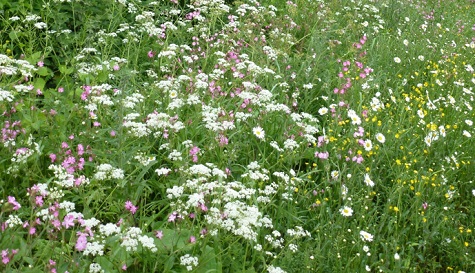TurfPro editor Laurence Gales writes: Here is a reminder for us all that many mammals and insects will be starting their hibernation period and looking for safe places to live during the cold winter months. Spare a thought when clearing up your green spaces to leave some leaf matter and debris and some overgrown areas for them to find a safe haven .
I have received some wise words from my friend and colleague, Bernard Sheriden on this subject. Bernard is an RHS Master of Horticulture, a Chartered Horticulturist and Member of the Chartered Institute of Horticulture. He was awarded the NDT (Institute of Groundsmanship) and is a long-standing Green Flag Award Judge.
Bernard says:
“Our biodiversity is threatened with an unprecedented decline, especially for pollinating insects. We can all do more, even in our own gardens, to make a difference.

Over the winter you might consider converting some or all of your lawn into a more wildlife-friendly zone. Allowing the grass to grow without mowing will increase invertebrates and pollinators. To make a real difference though, converting your lawn or borders into meadow by stripping off the turf and sowing with a suitable meadow flower seed mix will provide food and habitat for a much wider range of fascinating wildlife and will provide an attractive display.
Allowing parts of your garden to remain untidied and undisturbed over the winter provides hibernating opportunities for wildlife, and leaf, twig and log piles provide habitat for invertebrates, amphibians, reptiles and mammals, including the threatened hedgehog.

Bug Hotels are also becoming popular as they can accommodate a wide range of insects and small mammals.
Don’t forget to design in food and habitat for birds, with feeding stations giving real delight - the range and number of birds increasing in line with the investment you make in it. Trees and shrubs, including ivy and thorny bushes provide good nesting and roosting sites, whilst fruit and berries provide a winter food supply.
This time of the year is a safe time to clean ponds and water features too, doing the minimum harm to wildlife, including water pumps and filters. Newts will be hibernating, but frogs and fish will need careful treatment and handling, setting them aside in large containers or buckets until you are ready to put them back in the pond.
Take out as much decaying vegetable matter as possible, leaving arisings lying by the pondside for a day or two to allow any critters to find their way back into the pond. The arisings will then make a good addition to the compost heap, providing moisture, as well as nitrogen, phosphorus and potassium nutrients.
Looking forward to next year:- Now is a great time to take stock of what works and what doesn’t in your garden. You are likely to have some time to think about improvements to the design of features such as lawns, beds and borders. Improving the design to help wildlife by incorporating habitat features such as ponds, wildflowers, dry-stone walls, trees and shrubs with berries will all help to mitigate the ecological emergency about which we should all be concerned and taking action.”
Read more from Bernard Sheridan at theparkkeeper.